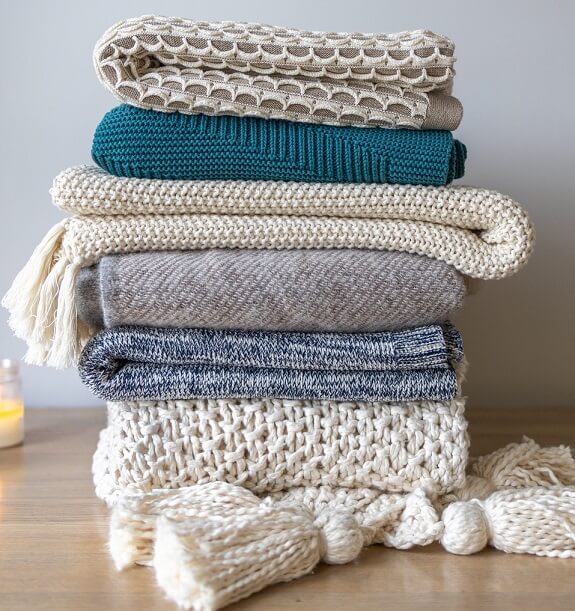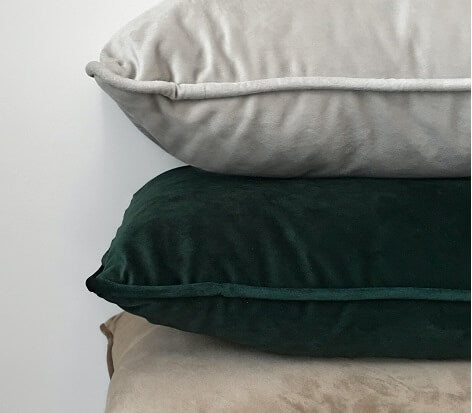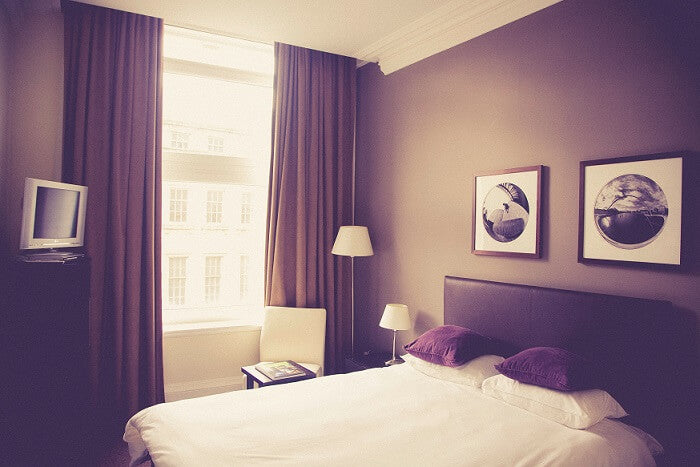Sleepwear tops are often overlooked when it comes to creating a healthy sleep environment. However, the fabric and fit of your sleepwear can have a significant impact on your sleep quality. Choosing the right sleepwear tops and regularly washing them can help regulate body temperature, prevent the buildup of bacteria and allergens, and ultimately lead to a cleaner and healthier sleep. You can also incorporate the best weighted blankets for adults In this blog post, we will explore the importance of sleepwear tops in promoting good sleep hygiene and overall wellness.

Understanding the Link Between Sleepwear and Sleep Quality
Many individuals don't fully recognize how deeply their choice of sleepwear influences the quality of their slumber. It's not merely about the tactile sensation of fabric against skin; the material of your sleepwear plays a pivotal role in thermal regulation throughout the night. Your body undergoes various temperature fluctuations during sleep, and the right fabric helps facilitate a balance, ensuring you remain neither too hot nor too cold. Equally, the design and fit of your sleepwear impact your overall comfort, which can either enhance or detract from your ability to fall asleep and stay asleep. Ill-fitting sleepwear can cause physical discomfort or even disturb your sleep by limiting your natural movement during the night. On the other hand, sleepwear that harmonizes with your body's needs can significantly elevate the quality of your rest. It's not just about softness or warmth; it's about how your sleepwear interacts with your body's own sleep mechanisms. Thermal comfort, facilitated by your choice in sleepwear, is a key factor in promoting the onset of sleep and preventing sleep disruptions. Thus, by making informed choices about the fabrics and fit of your sleepwear, you're not only investing in your comfort but also in the deeper, more restorative stages of sleep your body requires for health and regeneration.
Is it better to sleep with or without pajamas?There are a list of benefits to sleeping naked, like improved vaginal health, reproductive health in men, core temperature and increased intimacy between you and your partner. With that said, some experts warn hot sleepers, those with sensitive skin and allergy-sufferers to sleep with pajamas
The Best Fabrics for Your Sleepwear Tops
When selecting fabrics for your sleepwear tops, prioritize comfort and functionality. Cotton stands out as an excellent choice due to its softness and breathability, making it perfect for those seeking a cooler, more comfortable sleep experience.
Bamboo fabric is another top contender,
- renowned for its eco-friendly nature,
- moisture-wicking properties,
- and hypoallergenic qualities,
Offering a smooth, irritation-free night’s rest. For colder months, consider fabrics like wool or flannel, which provide warmth without sacrificing breathability. Wool, in particular, is known for its temperature-regulating properties, keeping you warm without overheating. Flannel, while cozy, ensures warmth and softness, making it an ideal choice for chillier nights. On the other hand, it's wise to steer clear of heavy, non-breathable fabrics that can trap heat and moisture, leading to discomfort and potential sleep disturbances. Silk, though luxurious and smooth, offers temperature-regulating properties and can be a viable option for those willing to invest in its delicate care requirements. In selecting the right fabric for your sleepwear tops, consider not only the season but also your personal comfort preferences and any specific skin sensitivities. By choosing wisely, you can enhance your sleep quality and enjoy a more restful, uninterrupted night.

The Perfect Fit: Not Too Tight, Not Too Loose
Achieving the ideal fit for your sleepwear tops is paramount to ensuring a night of restful sleep. The key is to find a balance that allows for unrestricted movement without compromising on comfort. Sleepwear that hugs the body too tightly may inhibit circulation and contribute to overheating, disrupting your sleep cycle. Conversely, overly loose sleepwear can become a nuisance, twisting and bunching up during the night, which may interrupt your sleep as you adjust your clothing. Optimal sleepwear should feel like a second skin, providing enough room to move freely in your sleep without you noticing its presence.
It's important to consider the design features of sleepwear tops, such as elastic bands, buttons, and seams, which should enhance comfort rather than detract from it. For instance, elastic bands should be firm enough to keep the garment in place, yet flexible enough not to leave impressions on your skin. Moreover, selecting sleepwear with minimal attachments or hard elements can prevent discomfort and ensure a smoother sleep experience.
Personal body type and sleep habits should guide your choice in fit. For those who tend to toss and turn, a fit that maintains its shape while allowing for ample movement is ideal. On the other hand, if you tend to sleep in colder environments, a slightly snugger fit might provide additional warmth without the need for heavy blankets that could disrupt sleep by causing overheating. By prioritizing the fit of your sleepwear tops, you're investing in your comfort and, consequently, in the quality of your sleep, enhancing your overall sleep hygiene without compromising on style or personal preference.
The Importance of Regular Washing for Your Sleepwear Tops
Maintaining the cleanliness of your sleepwear tops is crucial for a hygienic sleep environment. As we go about our nightly rest, our bodies naturally shed skin cells, produce oils, and sweat, which can cling to the fabric of our sleepwear. Over time, this accumulation can foster the growth of bacteria and allergens, potentially leading to skin irritations or disruptions in sleep due to discomfort or allergic reactions. To combat this, it's advisable to launder your sleepwear tops after every one to three wears, depending on your level of activity and personal sweat production.
When washing your sleepwear, opt for a gentle detergent that's effective yet kind to both the fabric and your skin. Hot water washing can be beneficial for thoroughly cleansing the fabric, but always refer to the care instructions specific to each garment to avoid shrinkage or damage. Additionally, incorporating a hypoallergenic laundry detergent can further protect sensitive skin from irritation caused by harsh chemicals or fragrances.
For those concerned with environmental impact or the longevity of their sleepwear, consider using eco-friendly detergents and cooler water temperatures when possible. These practices not only extend the life of your sleepwear tops but also minimize the ecological footprint of your laundry routine.
Implementing a regular washing schedule for your sleepwear is an integral part of sleep hygiene that complements other clean sleep practices. By ensuring your sleepwear is fresh, you're taking an important step towards a healthier night's rest, free from the unseen detriments of accumulated body soils and potential allergens. This practice is a simple yet effective way to enhance the overall cleanliness and comfort of your sleep environment.
How many times should you wear pajamas before washing them?
Why Do You Need to Wash Your Pajamas So Often? Stains and body odors are obvious reasons for washing a pair of pajamas. But even if they seem clean, you're better off washing them after three to four wears, for the same reason we wash our sheetsregularly.
Creating a Cleaner Sleep Environment Beyond Your Sleepwear
In addition to focusing on the choice and maintenance of sleepwear tops, cultivating a clean sleep space is paramount for optimizing sleep hygiene. Regular laundering of bed linens, including sheets, blankets, and pillowcases, plays a critical role in mitigating the accumulation of dust mites, dead skin cells, and other irritants that can impede sleep quality. Similarly, pillows should not be overlooked; they should be washed or replaced periodically to ensure they remain free of allergens and support proper neck alignment.
Maintaining the cleanliness of the bedroom environment itself is equally important. Dust and vacuum regularly to keep surfaces free of dust and potential allergens. This is especially crucial for individuals with sensitivities or respiratory issues, as a dusty or unclean bedroom can exacerbate symptoms, leading to disrupted sleep.
The temperature and airflow in the bedroom are additional components that contribute to a conducive sleep environment. Ensuring the room is well-ventilated and kept at a cool, comfortable temperature can aid in preventing sleep disturbances. This might involve adjusting the thermostat, using fans, or keeping windows open when weather permits to promote air circulation.
By addressing these areas alongside the care of sleepwear, individuals can create a comprehensive approach to improving sleep hygiene. It’s about building an environment that supports uninterrupted, quality sleep by eliminating potential physical discomforts or allergens that could disturb the body’s natural sleep processes. This holistic approach underscores the importance of cleanliness and comfort in achieving a restorative night's rest.
The Link Between Sleep Hygiene and Overall Wellness
Maintaining exemplary sleep hygiene transcends beyond ensuring a tranquil rest; it's foundational to our holistic health. By conscientiously selecting sleepwear tops with the right fabric and fit, and adhering to a regimen of regular laundering, we pave the way for not only a pristine sleeping environment but also for the fostering of our overall physical and mental wellness. Enhanced sleep quality directly correlates with heightened mood states, sharpened cognitive functions, and an overall sense of vitality, underscoring the profound impact of our nightly routines on our day-to-day lives. The relationship between our sleep practices and well-being is cyclical; as we improve one, we invariably enhance the other. This symbiosis emphasizes the importance of sleep hygiene as a pillar of health, akin to a balanced diet or regular exercise. Embracing these practices equips us with the tools for not just better sleep, but also for a more enriched and energetic life. By prioritizing the health of our sleep environment through thoughtful choices in sleepwear and cleanliness, we unlock the door to a myriad of health benefits that extend well beyond the night, affirming the vital role of sleep in our overall wellness journey.







